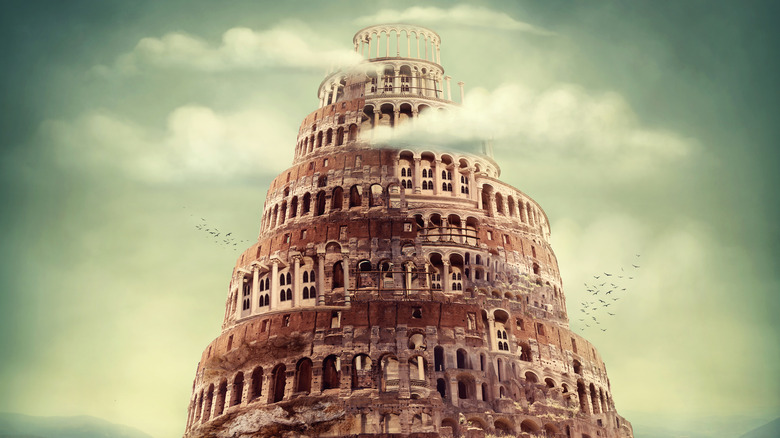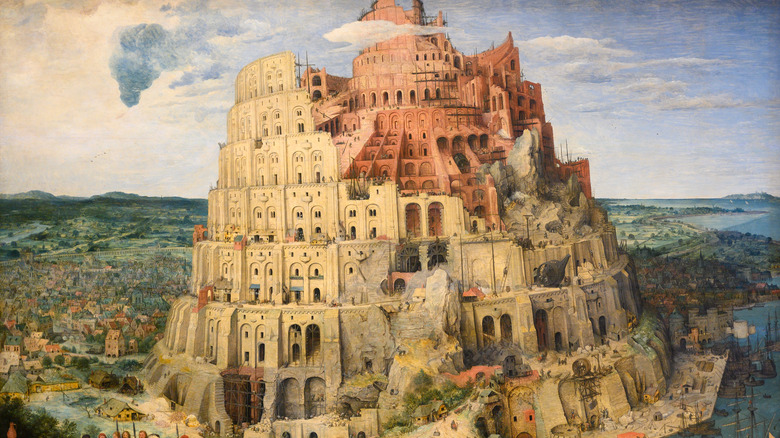Did The Tower Of Babel Really Exist?
Depending on which scholarship you believe, many of the events depicted in the Bible are, if not outright myths made up out of whole cloth, extremely inaccurate retellings of things that may have actually happened in one way or another. For example, the sacred text records the cities of Sodom and Gomorrah having been destroyed by fire due to God's wrath, when in actuality a meteor destroying an ancient city may have inspired the narrative, as Smithsonian Magazine reports. A few pages before the Sodom and Gomorrah narrative is that of the Tower of Babel, as recorded in Genesis 11. Specifically, at some unspecified time after the Great Flood, humanity decided to build a tower that reached Heaven. God was not pleased about this at all, and, as the text records, "confuse[d] their language" so that they could not communicate with each other and, thus, could not complete the job.
So is the story of the Tower of Babel a bit of fiction designed to explain the existence of different languages, while at the same time teaching a lesson about hubris? Or did it actually happen, and if so, is there evidence of its existence today?
A real tower might have inspired the Tower of Babel myth
As The Daily Beast notes, in order for any remnants of the Tower of Babel to have survived antiquity, or to have existed at all, several assumptions have to be true. First and foremost, it has to be assumed that all of humanity, and in particular all of humanity in and around Babylon, had been speaking the same language right around 2242 B.C., when the tower was supposedly built. In fact, by that time in history, there is evidence of multiple languages already being spoken.
Meanwhile, the area around where the ancient city of Babylon once stood is chock-a-block with the remains of towers, called ziggurats, that were built in antiquity. Many of them were built in fits and starts. One in particular, called Etemenanki — in Sumerian, "the temple of the foundation of heaven and earth" — may have inspired the Tower of Babel story, although the dates are completely off. What's more, the tower was almost certainly built at least in part with slave labor — enslaved people of conquered tribes who would not have spoken the same language. Today, Etemenanki is in ruins, although its foundation remains, according to Livius.

